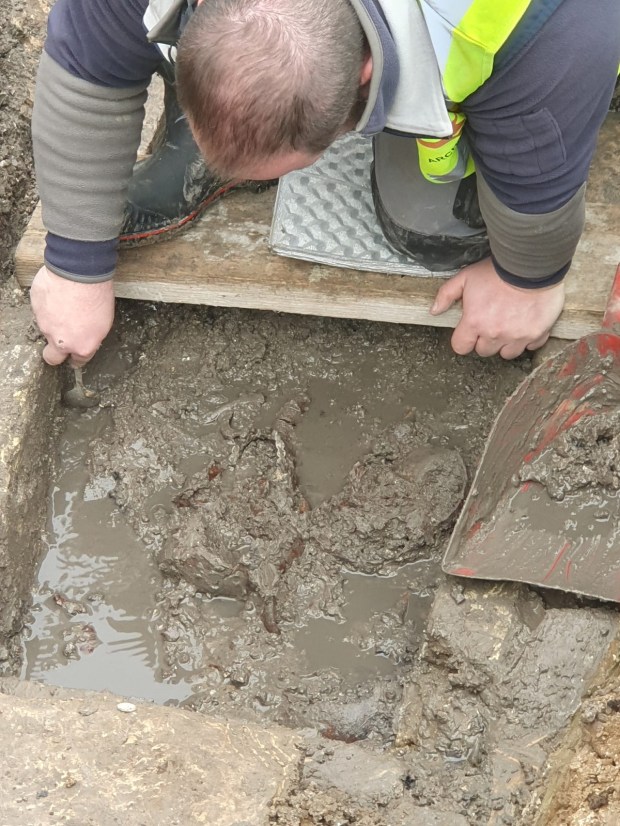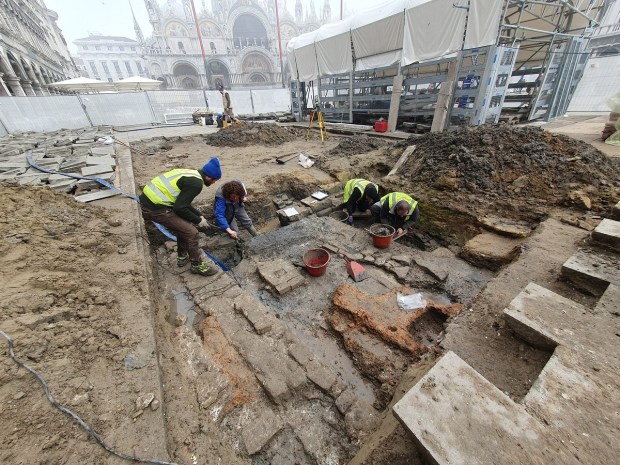Tourists visiting Venice have no shortage of historic churches and ruins to visit. But in a not-too-distant future, they may be able to add a new site to the list. Two weeks ago, archeologists working to restore the paved stones of St. Mark’s Square discovered the remains of a medieval church believed to be the Church of St. Geminianus.

Researchers unveiled the well-preserved remains of seven people interred in a tomb, as well as traces of walls and floors. As explained by Sara Bini, head of the local chapter of Italy’s State Archeology, it was common in the Middle Ages for believers to be buried inside church premises.
“Based on historical documents we know that the Church of St. Geminianus used to be here,” Bini said in an official Facebook post, “and since we know that burials took place within or near churches we can assume that what we unearthed are the walls and floors of St. Geminianus Church.”

Archaeologists had previously noted the presence of church walls in this part of St. Mark’s Square, with a team led in the late 1880s by Federico Berchet and Giacomo Boni documenting structural walls beneath the square. But as Bini explained, archeological methods at the time did not allow for accurate dating. “Thanks to current technologies we can better gauge the dating of this site,” Bini said.
St. Geminianuns Church was one of Venice’s most ancient churches, built in the 6th century, at least 500 years before St. Mark’s Cathedral (1094). Bini and her team hope that this discovery will allow a better understanding of how the current location of St. Mark’s Square looked in medieval times, when this area was crossed by canals that were later filled.
“This and other recent findings in nearby areas suggests that the area of St. Mark’s Square has been built, destroyed, and rebuilt over the centuries,” Bini added.



